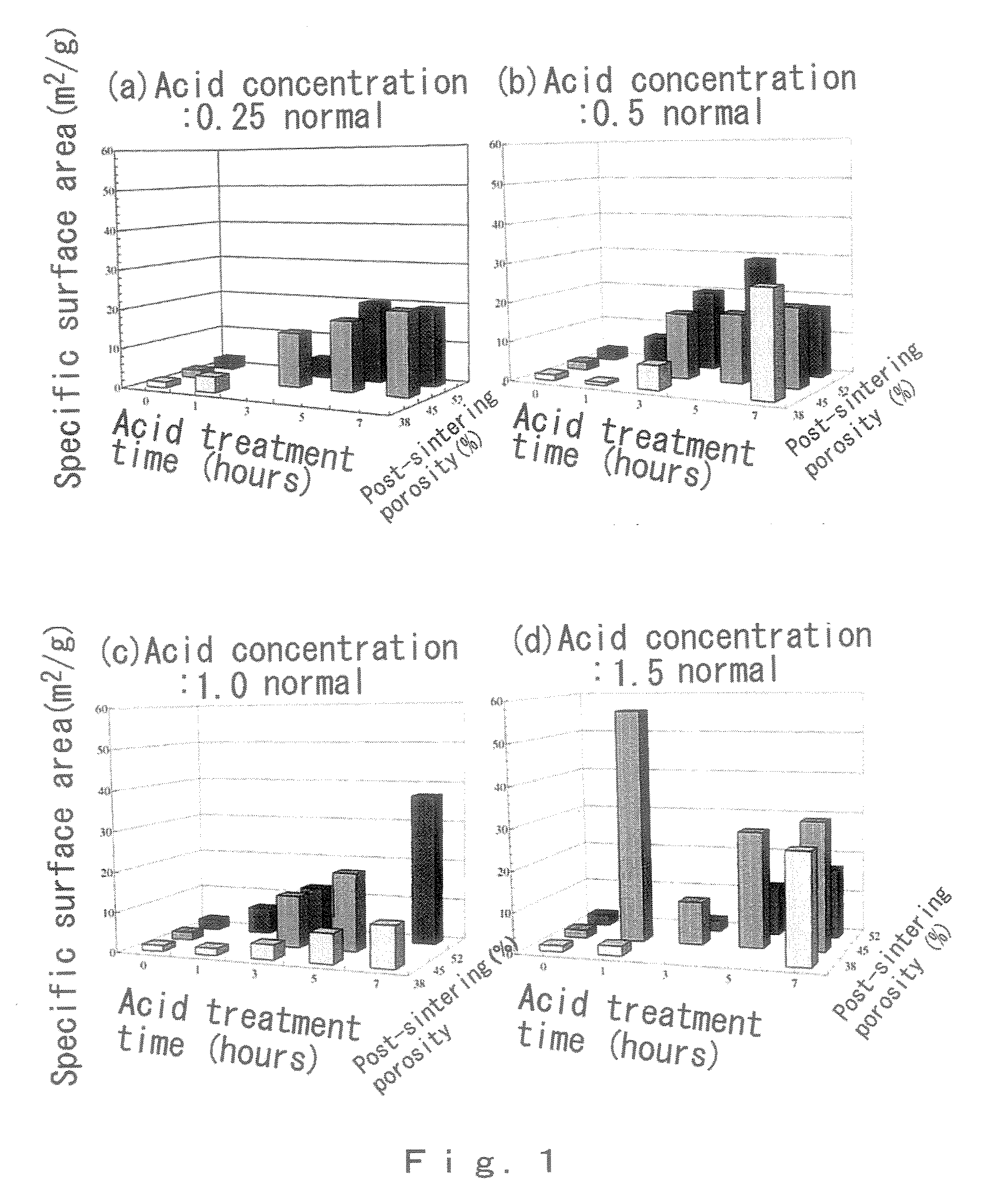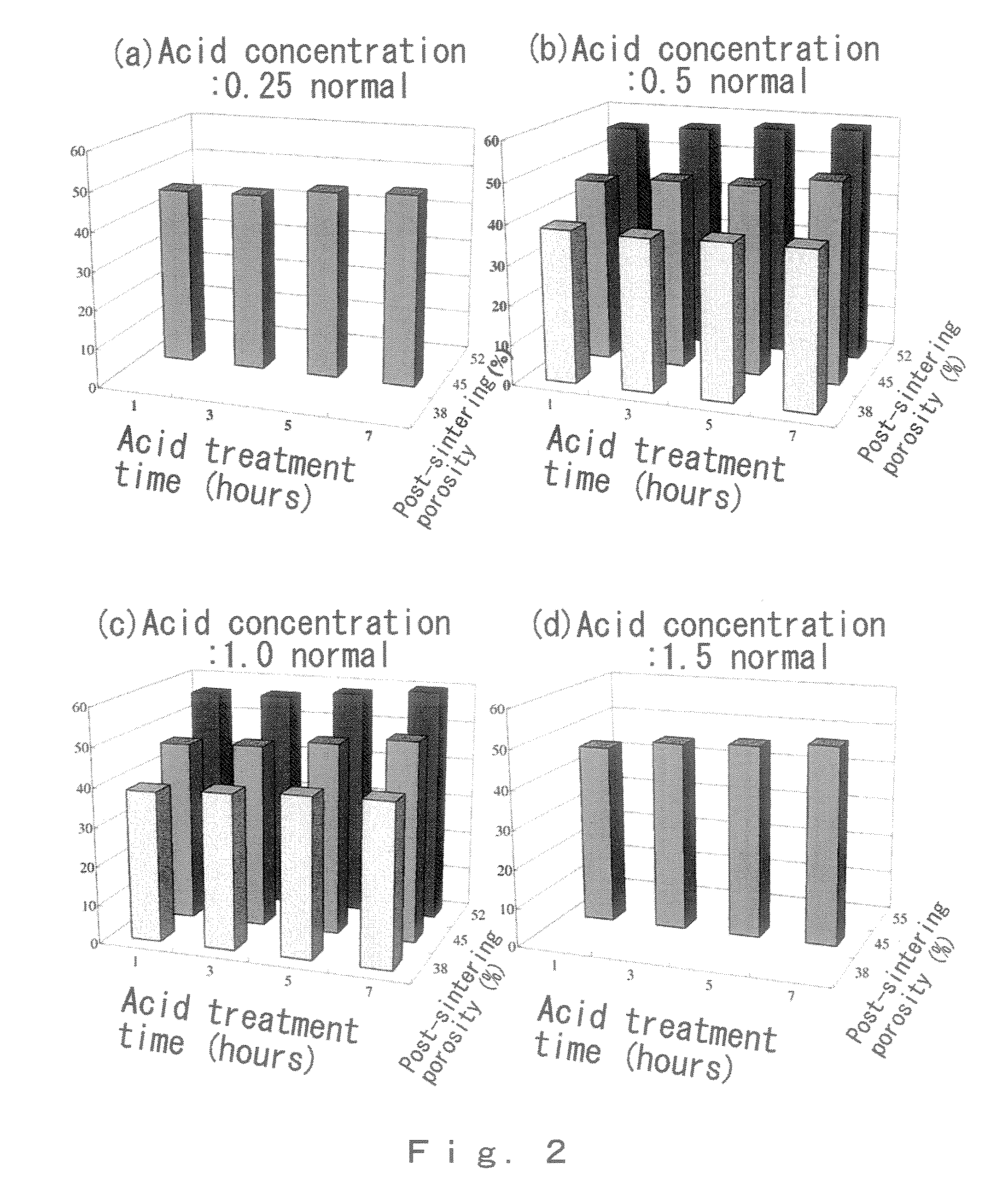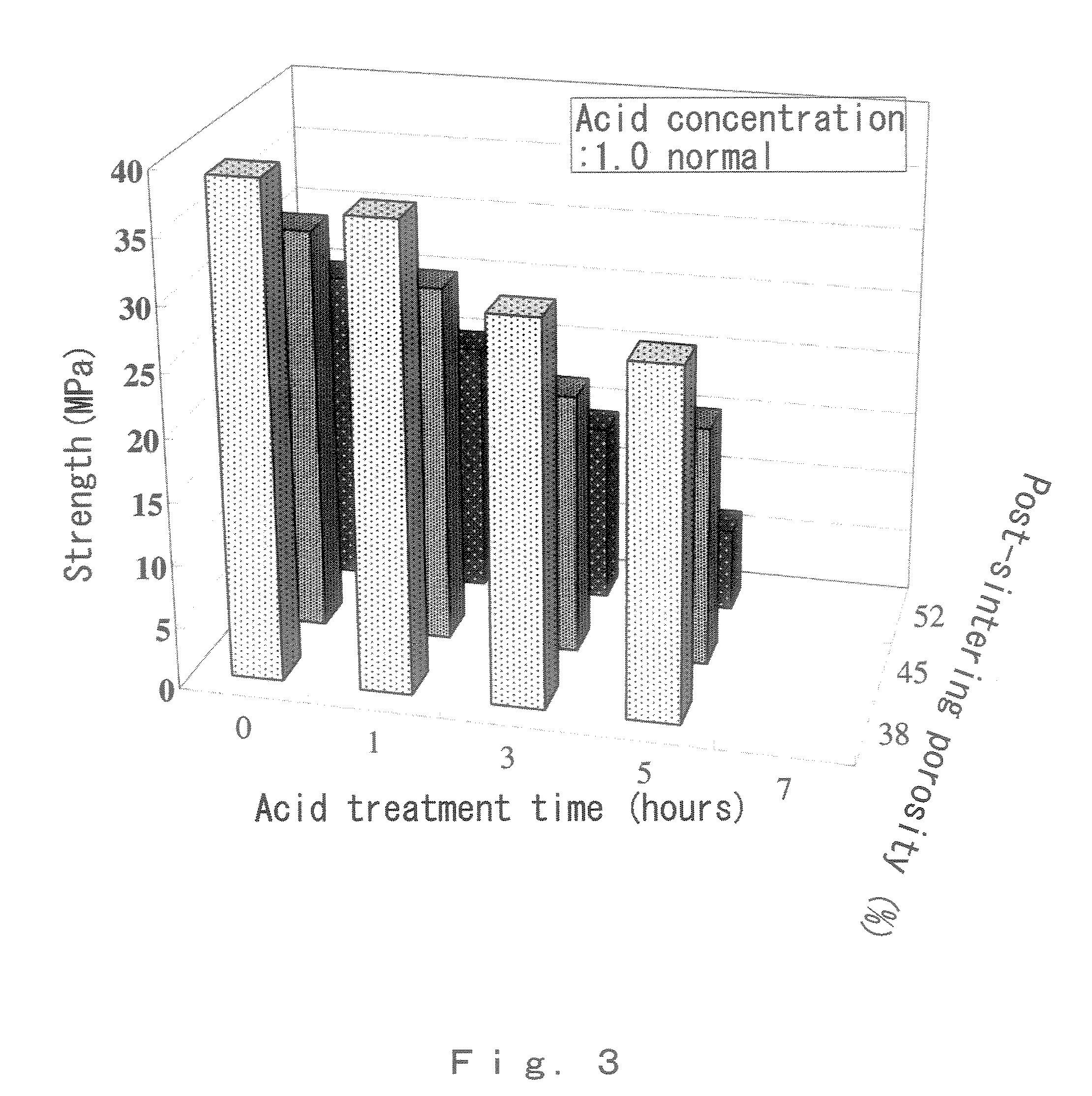Needle-shaped ceramic body, needle-shaped ceramic catalyst body and method for producing same
a ceramic catalyst and needle-shaped technology, applied in the direction of metal/metal-oxide/metal-hydroxide catalysts, machines/engines, silicates, etc., can solve the problems of dramatic decline in specific surface area, and difficulty in maintaining high specific surface area, so as to simplify the process of producing honeycomb catalysts, easy to support active catalysts, and solve problems such as catalyst quality degradation
- Summary
- Abstract
- Description
- Claims
- Application Information
AI Technical Summary
Benefits of technology
Problems solved by technology
Method used
Image
Examples
example 1
(1) Preparation of a submicron cordierite bulk
[0080] High-purity kaolin, talc, alumina, and silica powders were used as starting materials. Kaolin is a general term for compound oxides in which the main components are alumina, silica, and magnesia. The compositions of the kaolin and talc used in this example were as follows, in each case expressed as the molar ratio: the kaolin composition was Al2O3: SiO2 : MgO : K2O : Fe2O3=34.69 : 50.64 : 0.47 : 2.49 : 1.08; the talc composition was SiO2 : MgO=62.85 : 31.33.
[0081] The starting kaolin, talc, alumina, and silica powders were weighed out and blended, respectively, at 34.5 weight %, 40.4 weight %, 20.6 weight %, and 4.5 weight % as the weight proportions so as to give the cordierite composition. In addition with the goal of lowering the cordierite production temperature, 3 weight % boron oxide (B2O3) was a added to these starting powders. It was confirmed by x-ray diffraction measurements that the B2O3 addition reduced the cordieri...
example 2
Fabrication of a ceramic honeycomb carrier formed of needle-shaped particles
[0095] Using talc, fused silica, alumina, aluminu hydroxide, and kaolin, a compound of SiO2 and Al2O3, as the starting materials for conversion to cordierite, and using WO3 to replace 10% of the Al source with W with its different valence, the powders of these starting materials were compounded so as to provide approximately the theoretical cordierite composition. To this starting compounded material were added 2 wt % SrO as an acicularization additive as well as suitable quantities of binder, lubricant, humectant, and so forth, followed by mixing / kneading a typical method and then molding into a honeycomb shape with a cell wall of 100 μm, a cell density of 400 cpsi (cells per square inch), and a diameter of 50 mm. The resulting honeycomb molding was dried and then fired at 1260° C. in an air atmosphere to give a fired ceramic that had lattice defects. This fired body was treated for 3 hours in 1 normal ox...
example 3
(1) Fabrication of a ceramic carrier
[0101] Using talc, fused silica, alumina, aluminu hydroxide, and kaolin, a compound of SiO2 and Al2O3, as the starting materials for conversion to cordierite, and using WO3 corresponding to 5% of the Si source and similarly using CoO corresponding to 5% of the Si source, the powders of these starting materials were compounded so as to provide approximately the theoretical cordierite composition. To this starting compounded material were added 2 wt % SrO as an acicularization additive as well as suitable quantities of binder, lubricant, humectant, and so forth, followed by mixing / kneading by a typical method and then molding into a honeycomb shape with a cell wall of 100 μm, a cell density of 400 cpsi (cells per square inch), and a diameter of 50 mm. The resulting honeycomb molding was dried and then fired at 1260° C. in an air atmosphere to give a direct-supporting ceramic carrier according to the present invention. SEM inspection confirmed that...
PUM
| Property | Measurement | Unit |
|---|---|---|
| width | aaaaa | aaaaa |
| aspect ratio | aaaaa | aaaaa |
| specific surface area | aaaaa | aaaaa |
Abstract
Description
Claims
Application Information
 Login to View More
Login to View More - R&D
- Intellectual Property
- Life Sciences
- Materials
- Tech Scout
- Unparalleled Data Quality
- Higher Quality Content
- 60% Fewer Hallucinations
Browse by: Latest US Patents, China's latest patents, Technical Efficacy Thesaurus, Application Domain, Technology Topic, Popular Technical Reports.
© 2025 PatSnap. All rights reserved.Legal|Privacy policy|Modern Slavery Act Transparency Statement|Sitemap|About US| Contact US: help@patsnap.com



